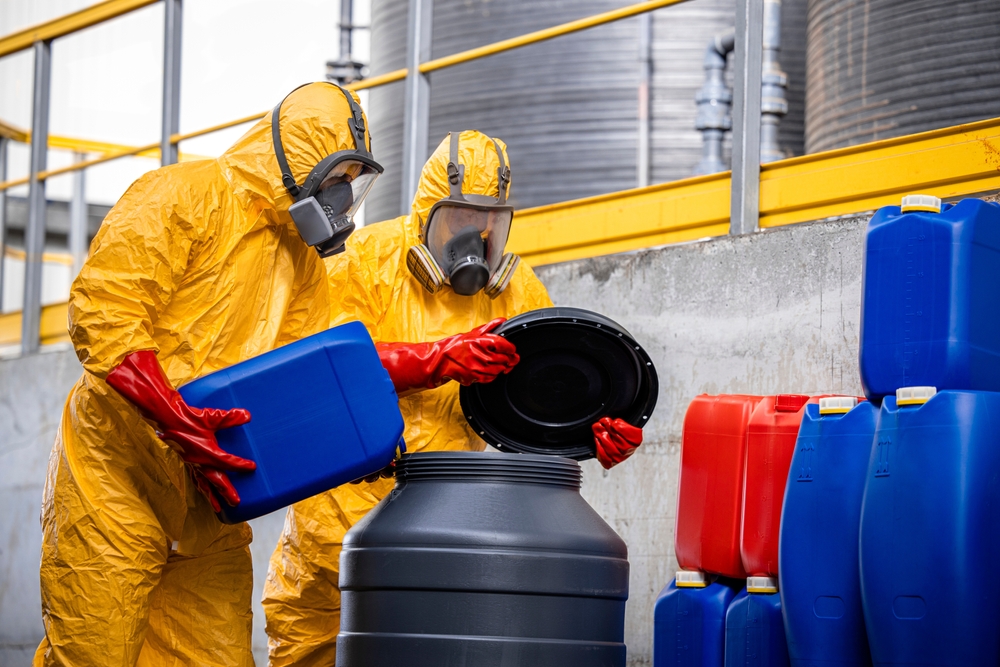The U.S. Chemical Safety and Hazard Investigation Board (CSB) released a final report on a hydrogen chloride (HCl) release at the Wacker Polysilicon North American facility in Charleston, Tennessee. A worker was fatally injured in the incident.
The CSB found that at the time of the incident in November 2020, there were multiple contract workers present on the fifth floor of an equipment access platform at the facility. Contract workers were from two different firms, conducting different work and wearing different levels of personal protective equipment (PPE).
One of the workers applied excessive torque to flange bolts on a heat exchanger outlet pipe containing HCl, causing the pipe to crack and releasing the hazardous chemical in the workers’ vicinity.
As a white cloud of HCl expanded, the workers on the platform weren’t able to see their surroundings or access the staircase, the only way to exit the platform. Three of the workers, who weren’t wearing full-body chemical-resistant suits, began climbing down the side of the structure to escape the HCl cloud. All three workers fell approximately 70 feet during their attempt to escape. One of the workers died from the fall, and the other two sustained serious injuries.
The CSB identified four key safety lessons in its report:
- Written procedures: Wacker tasked contract pipefitters with torquing flange bolts on a pipe segment, which contained hazardous HCl and was equipped with multiple bolts with different torque requirements. Wacker didn’t have written procedures for the contractors to follow and relied on the piping manufacturers’ equipment manual, which didn’t include torque specifics for all bolts on the piping segment and verbal instructions for which bolts to torque.
- Control of hazardous energy (lockout/tagout): Wacker didn’t treat torquing operations on equipment containing hazardous chemicals as an activity that required isolation of that equipment because it didn’t involve the intentional opening of a line. Wacker didn’t perform a risk analysis and didn’t implement precautions to mitigate risk.
- Simultaneous operations: When the incident occurred, four workers from a separate contract company were performing an unrelated pipe insulation task on the same structure where the pipefitter crew was working. Wacker didn’t have a procedure or policy for evaluating simultaneous operations, and no evaluation of risk to the other contractors was conducted.
- Means of egress: During the incident, seven workers were present on the fifth-floor open-air platform, which was equipped with just a single point of egress. The structure was based on current building code requirements, which the CSB determined don’t provide for sufficient means of egress. Wacker employees identified a need for a second point of egress 3 months before the incident, but Wacker didn’t take any action to address this recommendation before the 2020 incident.
“What should have been fairly straightforward activity by two separate groups of workers turned deadly because of several tragic circumstances,” CSB Chairperson Steve Owens said in a board statement. “Our report identifies several critical issues that must be addressed to ensure safe operations whenever there are different groups of workers performing equipment maintenance and other work simultaneously in an area.”
CSB releases video on Wisconsin refinery explosion and fire
The CSB released a new safety video on its investigation into an April 2018 explosion and fire at the Husky Superior Refinery in Superior, Wisconsin. The explosion launched a metal fragment that punctured an asphalt storage tank, leading to fires; injuries to 36 workers; the release of 39,000 pounds of flammable hydrocarbon vapor into the air; and roughly $550 million in damage to the facility.
Over 2,500 residents of the city of Superior were evacuated from their homes. The nearby city of Duluth, Minnesota, issued a shelter-in-place order.
A final report on the incident—released last year—identified six safety lapses that contributed to the incident:
- Transient operation safeguards that were either not implemented or not effective at the time of the incident;
- Lack of in-house process knowledge;
- Failure to adequately maintain process safety information, operating procedures, process hazard analyses, and operator training;
- Failure to learn the lessons of a similar incident in California;
- Brittle fracture of a primary absorber and sponge absorber vessels during extreme events; and
- A lack of emergency preparedness that could have prevented the asphalt from catching fire due to the size of the asphalt release.

